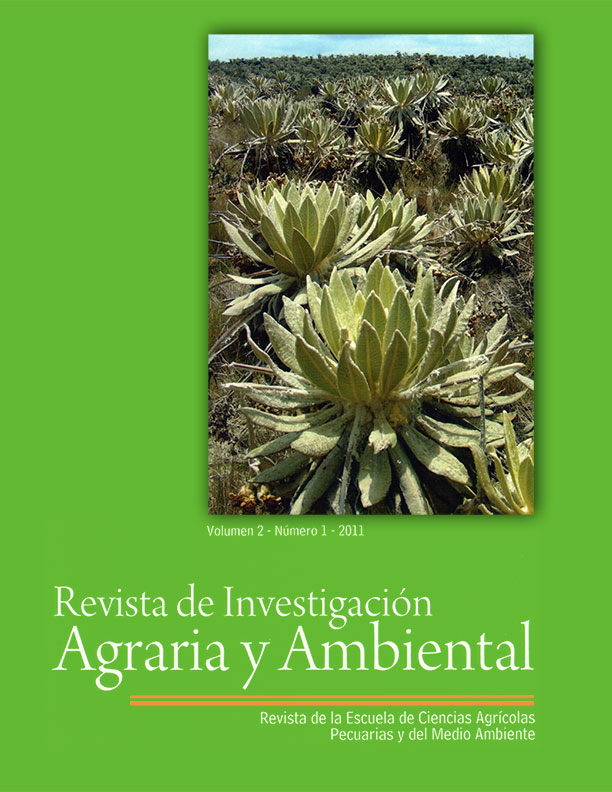When RIAA receives the postulation of an original by its author, either through email or post mail, considers that it can be published in physical and/or electronic format and facilitates its inclusion in databases, newspaper archives and other systems and indexing process. RIAA authorizes the reproduction and citation of the Journal’s material, provided that explicitly indicates journal name, the authors, the article title, volume, number and pages. The ideas and concepts expressed in the articles are responsibility of the authors and in no case reflect the institutional policies of the UNAD.
Conservation and sustainable use in the buffer zone of the moorland of Chiles, Department of Nariño
this project was able to determine the need of strengthen the indigenous communities in Chiles, so they claim to nature, by prioritizing projects that can generate income to low income people which allow to decrease the negative impact on the moorland. the Chiles moorland is inhabited by 3.637 people of which 100% belong to indigenous council with Sisben level one, sidewalks nearby that are part of it are Calera, Chiles, Cristo Rey, and Marpi Nazate, the moorland of Chile has 5.626 hectares, soils formed entirely of pyroclastic material from volcanoes: Chiles, Azufral, Cumbal, their use is destined in a 3.8% for agriculture, 8.2% for pasture, devoted to dairy farming and a 78% is considered protected area without any use. Human activities that threaten the integrity of this ecosystem, are deforestation (8 ha/year) and burning (10 ha/ year), 70% of the population of the indigenous reserve of Chiles perceives an average monthly income below $ 50,000 (USD$20) from activities such as farmers, laborers, masons, carpenters, among others. Every year, the agricultural frontier is expanding into 10 ha/year, 120 to 150 trees / ha per year of species such as yellow, oak, quasar, colla, capulicillo are cut and around 30 families residing in Marpi and Nazate are dedicated to charcoal production, using around 80 trees / year.
When RIAA receives the postulation of an original by its author, either through email or post mail, considers that it can be published in physical and/or electronic format and facilitates its inclusion in databases, newspaper archives and other systems and indexing process. RIAA authorizes the reproduction and citation of the Journal’s material, provided that explicitly indicates journal name, the authors, the article title, volume, number and pages. The ideas and concepts expressed in the articles are responsibility of the authors and in no case reflect the institutional policies of the UNAD.









